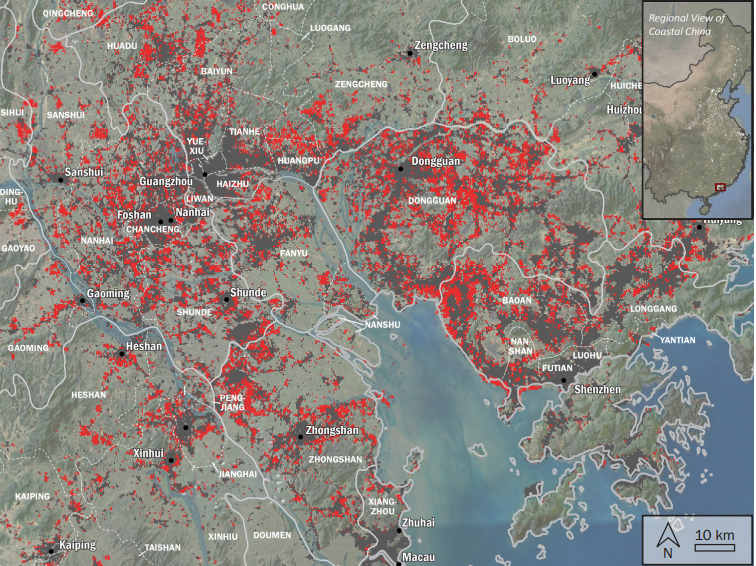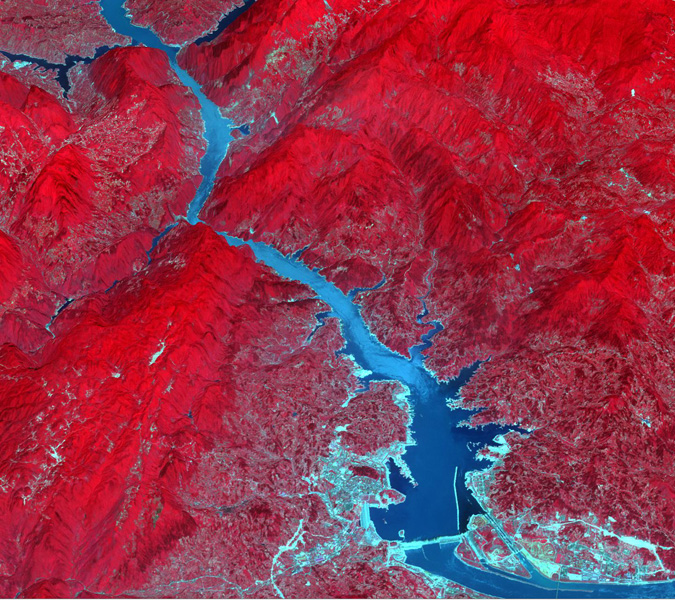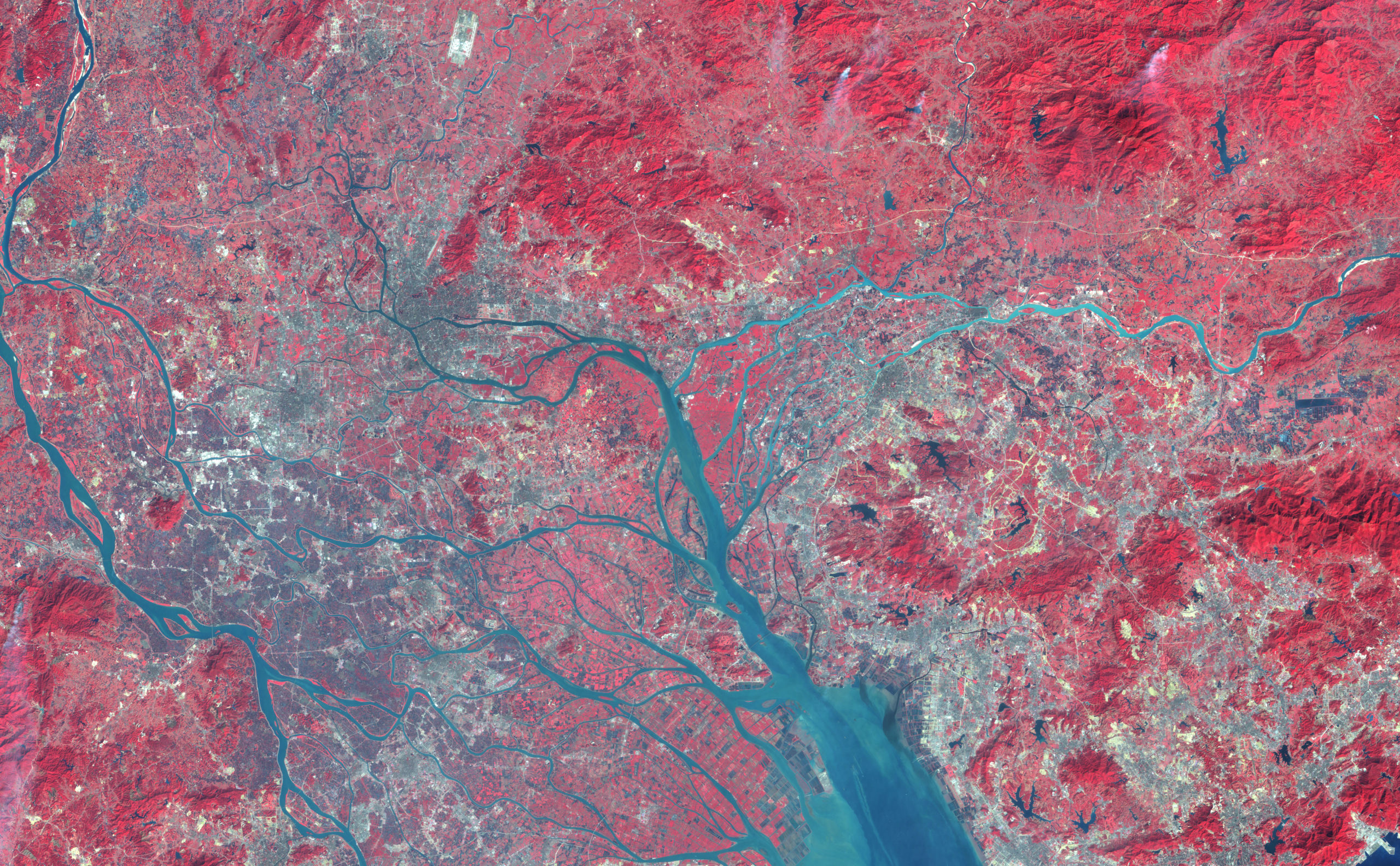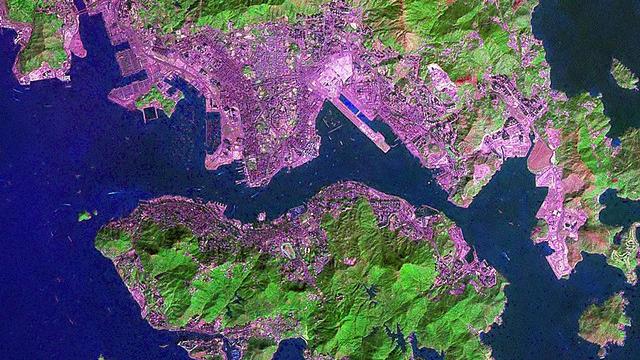It’s difficult to track the growth of cities across multiple countries in a consistent way — especially considering tools like satellite imagery have only been around for a few decades. But this week the World Bank Group released the results of an unprecedented, decade-long analysis of one of the world’s most interesting boom regions: East Asia.
Picture: Hong Kong captured by Jesse Varner from NASA’s World Wind software/Flickr
The report uses image data of East Asia from the Moderate Resolution Imaging Spectroradiometer tool aboard NASA’s Terra and Aqua satellites, and compares it to existing census data and other tracking methods. The idea? To get a baseline read for urban planners and policy-makers on the ground. “Once cities are built, their urban form and land use patterns are locked in for generations,” explain the authors in the introduction. To create smart growth strategies now, planners and policy-makers need facts.
Looking at growth between 2000 and 2010, the report is fascinating and well-worth a read (at the very least, check out this PDF overview). In the meantime, here are a few key facts.

The report includes this map of the Pearl River Delta, produced by University of Wisconsin-Madison, Sept. 2013; Administrative boundaries from University of Michigan – China Data Center.
Tokyo is no longer the world’s biggest urban area
One take-away from the report that’s been widely reported is that Tokyo has been dethroned as the largest and most populous urban area in the world. The new queen? The Pearl River Delta — also known as the aggregation of four huge cities that have spilled into each other: Guangzhou, Shenzhen, Foshan and Dongguan. Together, that adds up to 42 millions inhabitants, more than the population of countries “including Argentina, Australia, Canada and Malaysia,” add the authors.

Urban growth in Jakarta between 1976, 1989, and 2004, captured by ASTER on on NASA’s Terra satellite.
Individual cities are spilling over to form a single city
But that doesn’t mean the function as one city. When cities “spill over” into other jurisdictions, they often continue to operate separately despite being, well, one urban area. “Less than 40 per cent of the built up land and population of the Jakarta urban area are within Jakarta’s provincial boundaries,” the World Bank explains by way of example.

The Three Gorges Dam on the Yangtze River shot by ASTER. Via JPL/NASA.
There’s not as much sprawl as you think
It might look like sprawl from the satellite’s view, but it’s not. “Despite the appearance of vast sprawl and uncontrolled expansion, East Asian cities are an efficient form of human settlement, with an urban population twice that of Europe residing in a smaller amount of urban land,” the study reports.

NASA captured the Pearl River Delta with Landsat 7 in 2003.
If you want to see real growth, look beyond megacities
Sure, the authors explain, we all look at the megacities first. But if you really want a portrait of how the world’s cities are growing, look at the mid-sized or simply large cities are growing. “Urbanisation in East Asia tends to be discussed with respect to its massive megacities of 10 million or more people,” they say. “However, there are only eight such urban areas in the region, but there are 572 urban areas with 100,000 to 500,000 people, accounting for two-thirds of the urban areas in the region.”
And that’s one of the big challenges, say the authors. When you can’t treat a city as a single entity, it’s nearly impossible to implement smart growth policies from the planning or development perspective.
